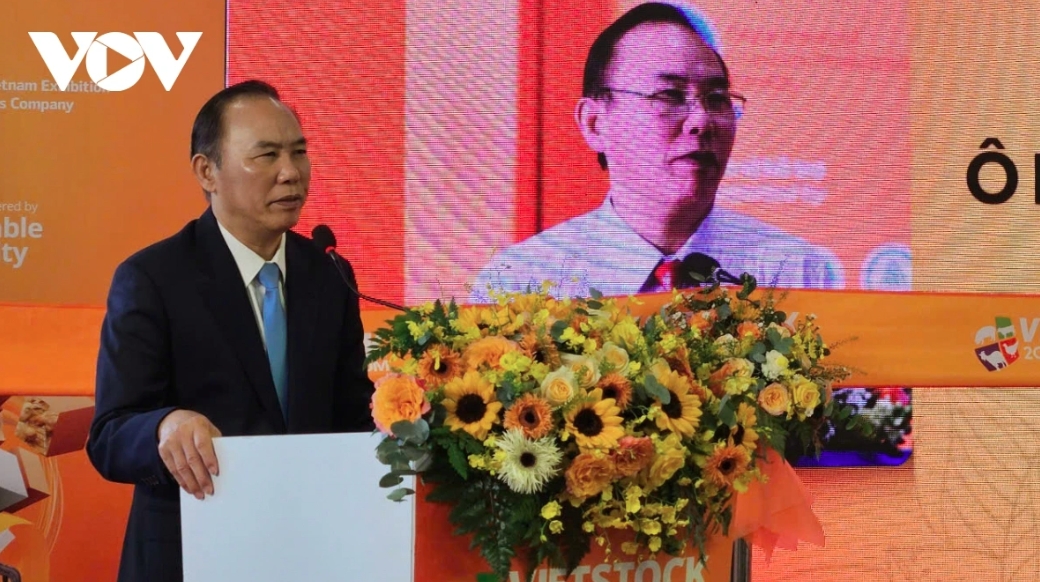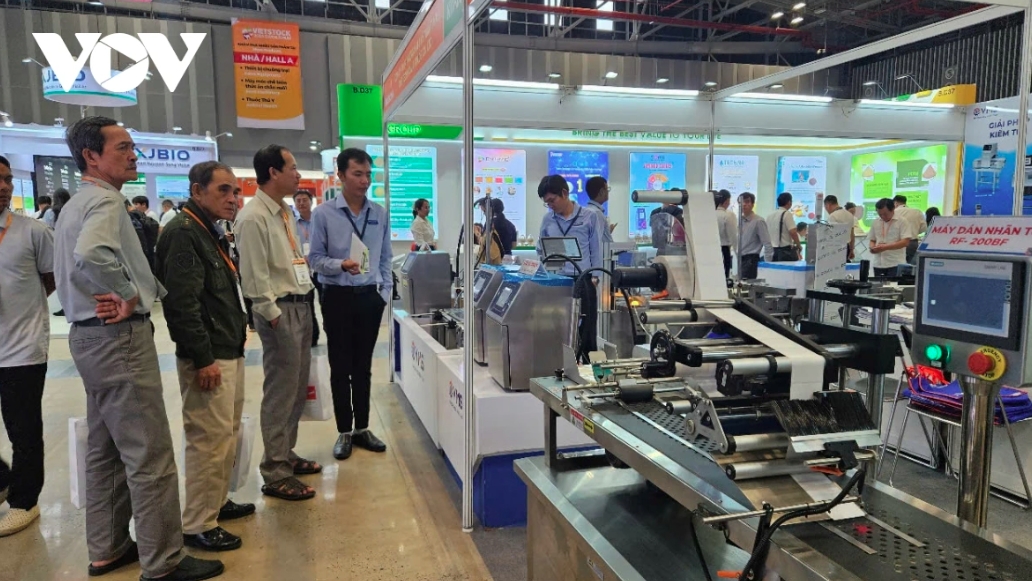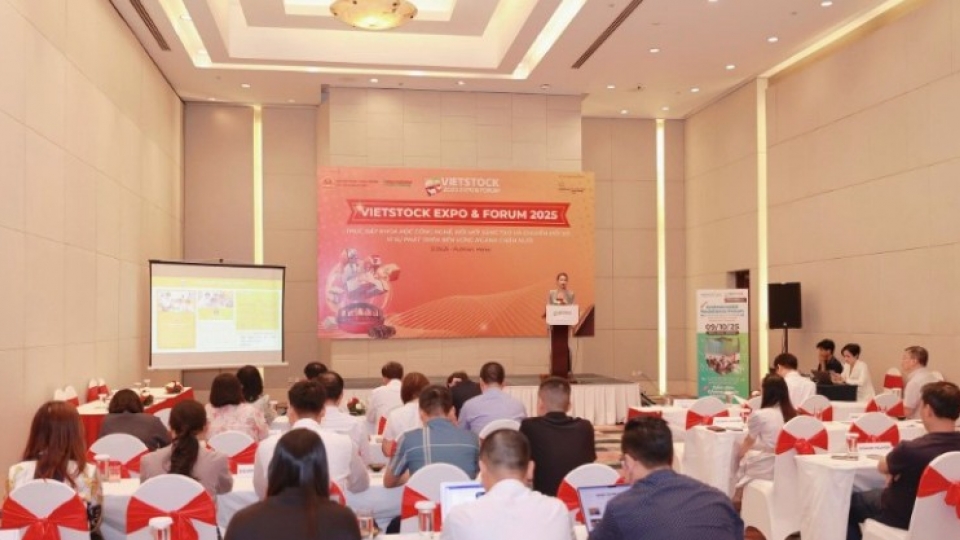Livestock industry strengthens global position amid cost and disease challenges
VOV.VN - Vietnam’s livestock industry is asserting its place on the global map, yet still faces major challenges related to production costs, technology adoption, and disease outbreaks, said Deputy Minister of Agriculture and Environment Phung Duc Tien.

Addressing the Vietnam’s Premier International Feed, Livestock & Meat Industry Show (Vietstock 2025) in Ho Chi Minh City on October 8, Tien pointed out that the livestock industry contributes around 25–27% of the agricultural GDP, playing a vital role in food security for more than 100 million people, serving around 15 million international tourists annually, and providing livelihoods for millions of farming households.
Vietnam ranks 5th globally in pig population, 6th in pork production, 2nd in waterfowl numbers, 4th in global pork consumption, and 4th in fresh milk output among ASEAN countries.
Despite these impressive figures, he admitted, the industry faces persistent obstacles, including high production costs, reliance on imported feed and breeding stock, fragmented production systems, and small-scale operations that make it difficult to implement modern technologies.
A particular concern is the reemergence of African Swine Fever (ASF), now with a new hybrid strain. The outbreak poses a significant threat to farm biosecurity, increases production costs, and reduces the competitiveness of domestic livestock products.
To address these challenges, Deputy Minister Tien called for industry events like Vietstock to go beyond networking, setting clear goals for trade deals, technology transfers, and the application of advanced technologies in production activities.
He also recommended ongoing efforts to enhance the organisation of industry exhibitions, strengthen linkages with businesses, cooperatives, and farmers, and accelerate the transition toward a multi-tiered, high-tech livestock sector that fully leverages Vietnam’s position in the global value chain.

“If we don’t choose to lead with technology and fail to leapfrog, it will be very difficult for Vietnamese agriculture to thrive,” said the official.
The Deputy Minister acknowledged progress in environmental management and equipment upgrades, noting that processing and slaughtering technologies have seen improvement, albeit slowly.
“We need to reassess and enhance livestock exhibitions to better reach businesses, cooperatives, and farmers,” he added. “Currently, about 50% of livestock production remains small-scale, so our technologies must cater to all scales—from smallholders to large enterprises. Only then can we truly unlock the industry’s full potential.”




